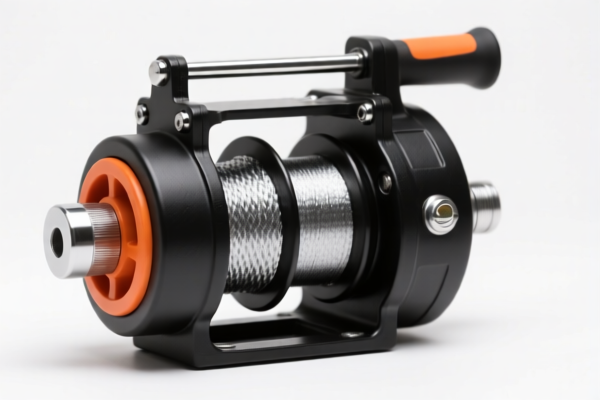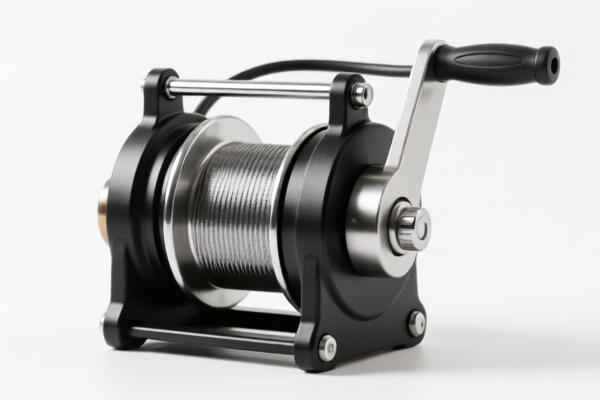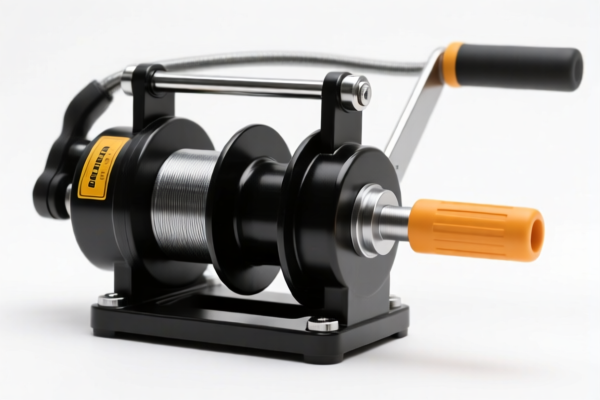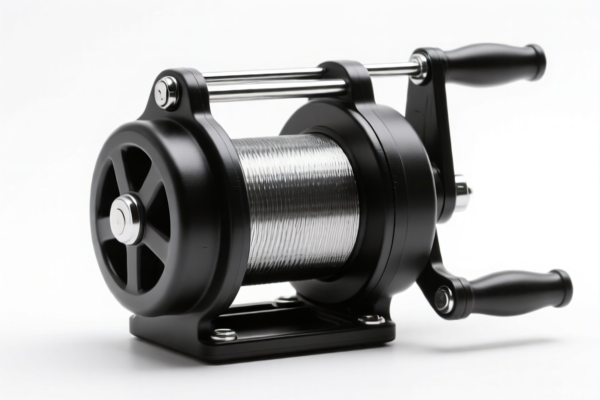| HS Code | Official Doc | Tariff Rate | Origin | Destination | Effective Date |
|---|---|---|---|---|---|
| 8425190000 | Doc | 55.0% | CN | US | 2025-05-12 |
| 8425390100 | Doc | 55.0% | CN | US | 2025-05-12 |
| 8479899599 | Doc | 57.5% | CN | US | 2025-05-12 |
| 8509805095 | Doc | 34.2% | CN | US | 2025-05-12 |
| 8509905500 | Doc | 59.2% | CN | US | 2025-05-12 |




Manual Winch
A manual winch is a mechanical device used to lift or move heavy objects using a hand-operated crank to wind a rope or cable around a drum. It provides mechanical advantage, allowing a user to exert a relatively small force over a longer distance to achieve a larger force over a shorter distance.
Material
Manual winches are commonly constructed from:
- Steel: The primary material for the frame, drum, gears, and pawl mechanism due to its high strength and durability. Different grades of steel are used depending on the winch’s intended load capacity.
- Cast Iron: Often used for the gear housing and side plates in heavier-duty winches.
- Aluminum: Lighter-weight winches may utilize aluminum alloys for certain components to reduce overall weight.
- Rope/Cable: Typically made of steel wire rope, synthetic rope (like polyester or nylon), or chain, chosen based on strength, flexibility, and environmental considerations.
- Hardware: Components like pawls, handles, and mounting brackets are generally steel or alloy steel.
Purpose
The primary purpose of a manual winch is to provide a controlled lifting or pulling force where powered options are unavailable, impractical, or undesirable. Common applications include:
- Vehicle Recovery: Pulling vehicles out of mud, snow, or other difficult terrain.
- Marine Applications: Raising and lowering boat anchors, adjusting sails, and maneuvering loads on boats.
- Construction & Heavy Lifting: Lifting materials, positioning equipment, and assisting in rigging operations.
- Industrial Applications: Moving heavy machinery, adjusting loads, and general material handling.
- Off-Roading: Self-recovery and assisting other vehicles.
- Arboriculture: Lifting heavy branches or sections of trees.
Function
Manual winches operate based on the principle of mechanical advantage. The key components and their functions are:
- Drum: The cylindrical component around which the rope or cable is wound.
- Gears: A series of gears reduce the speed of rotation but increase the torque, providing the lifting force. Different gear ratios provide varying levels of mechanical advantage.
- Crank Handle: The lever used to manually rotate the gears and wind the rope/cable.
- Pawl: A spring-loaded ratchet mechanism that prevents the drum from unwinding when force is not applied to the crank handle.
- Brake: Many winches incorporate a brake mechanism to provide additional holding power and control during lowering.
- Rope/Cable Guide: Directs the rope/cable onto the drum evenly.
Usage Scenarios
- Static Pulling: Used for steady, controlled pulls, like dragging an object across a flat surface.
- Lifting: Raising heavy objects vertically or at an angle.
- Positioning: Precisely moving objects into a desired location.
- Securing Loads: Tightening ropes or cables to secure loads for transport or storage.
- Self-Recovery: Using the winch to pull a stuck vehicle or object free.
Common Types
- Single-Drum Winches: The most basic type, with a single drum for winding the rope/cable.
- Double-Drum Winches: Feature two drums, allowing for greater rope capacity or the ability to operate two lines simultaneously.
- Snubbing Winches: Designed for controlled lowering of heavy loads, often used in marine applications.
- Worm Gear Winches: Utilize a worm gear mechanism for high mechanical advantage and self-locking capability, making them ideal for heavy lifting.
- Lever Winches (Come-Alongs): Compact, portable winches with a lever handle, commonly used for pulling and positioning loads.
- Hand Chain Winches: Operated using a hand chain, providing a smooth and controlled lifting action. These are often used in industrial settings.
- Electric Winches: Although not strictly manual, they are often compared and used in similar applications. They utilize an electric motor to power the drum.
Manual winches fall under the category of pulley tackle and hoists, or winches and capstans. Here are the relevant HS codes based on the provided information:
-
8425190000: Pulley tackle and hoists other than skip hoists; winches and capstans; jacks: Pulley tackle and hoists other than skip hoists or hoists of a kind used for raising vehicles: Other. This code covers pulley tackle and hoists, excluding those specifically for vehicle lifting, and includes other types of winches and hoists.
- 84: Chapter 84 relates to Nuclear reactors, boilers, machinery and mechanical appliances; parts thereof.
- 25: Heading 8425 specifically covers pulley tackle and hoists, winches and capstans, jacks.
- 19: Subheading 842519 covers pulley tackle and hoists other than skip hoists or hoists of a kind used for raising vehicles, and 'Other' types.
-
8425390100: Pulley tackle and hoists other than skip hoists; winches and capstans; jacks: Winches; capstans: Other. This code specifically covers winches and capstans, categorized as 'Other'.
- 84: Chapter 84 relates to Nuclear reactors, boilers, machinery and mechanical appliances; parts thereof.
- 25: Heading 8425 specifically covers pulley tackle and hoists, winches and capstans, jacks.
- 39: Subheading 842539 covers winches and capstans.
- 01: Further specifies 'Other' types within winches and capstans.
Tax Information:
Both HS codes 8425190000 and 8425390100 currently have a base tariff of 0.0%, a surcharge tariff of 25.0%, and a surcharge tariff of 30.0% effective April 2, 2025. This results in a total tariff of 55.0% for both.
Important Note:
The provided reference material does not specify any specific declaration precautions, required documents, material verification requirements, or certification information for these HS codes. However, it is always recommended to consult with a customs broker or relevant authority to ensure compliance with all applicable regulations.
Customer Reviews
No reviews yet.